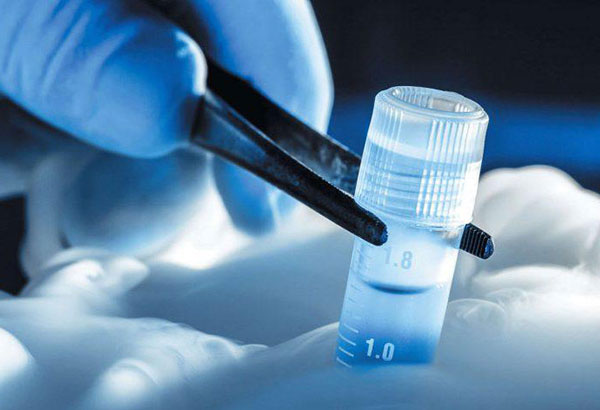
Sperm freezing is the process of collecting, analyzing, freezing and storing a man’s sperm. The samples are later used for fertility treatments or donated to other couples or individuals, including same-sex female partners. This overall process is known as cryopreservation and is sometimes referred to as sperm banking.
Firstly, your sperm will need to be tested for any infectious diseases like HIV and Hepatitis. This has no bearing on whether you can freeze your sperm or not but is to ensure that affected sperm samples are stored separately to prevent contamination of other samples.
You’ll then need to give your written, informed consent to your sperm being stored and specify how long you want it to be stored.
At the clinic, you’ll be asked to produce a fresh sample of sperm (if you’re able), which will be mixed with a special fluid (a cryoprotectant) to protect the sperm from damage during freezing. Before freezing, the sperm sample is usually divided between a number of containers called straws. This means that not all the sperm needs to be thawed at once and can be used in multiple treatments. The samples are then cooled slowly and plunged into liquid nitrogen.
It’s very safe – we’re not aware of any risks to patients or children from using frozen sperm. Not all sperm will survive the freezing and thawing process though.
Cryoprotectant is added to the semen to control sperm damage caused by freezing. Cryoprotectants are low-molecular-weight and highly permeable chemicals used to protect sperm from freeze damage by ice crystallization.
There are two cryopreservation techniques:
 Slow freezing which involves progressive sperm cooling over a period of two to four hours in two or three steps. The specimen is then plunged into liquid nitrogen at minus 196 degrees Celsius.
Slow freezing which involves progressive sperm cooling over a period of two to four hours in two or three steps. The specimen is then plunged into liquid nitrogen at minus 196 degrees Celsius. Rapid freezing requires direct contact between sterile straws holding the samples and nitrogen vapors for eight to 10 minutes, followed by immersion in liquid nitrogen at minus 196 degrees Celsius.
Rapid freezing requires direct contact between sterile straws holding the samples and nitrogen vapors for eight to 10 minutes, followed by immersion in liquid nitrogen at minus 196 degrees Celsius.